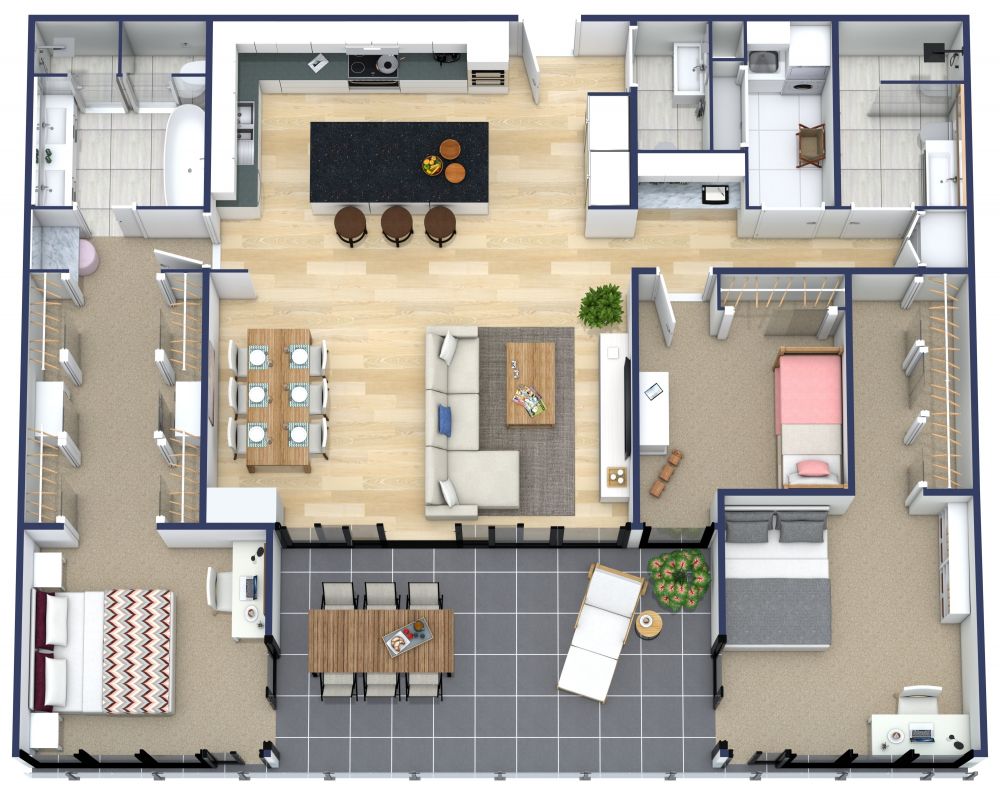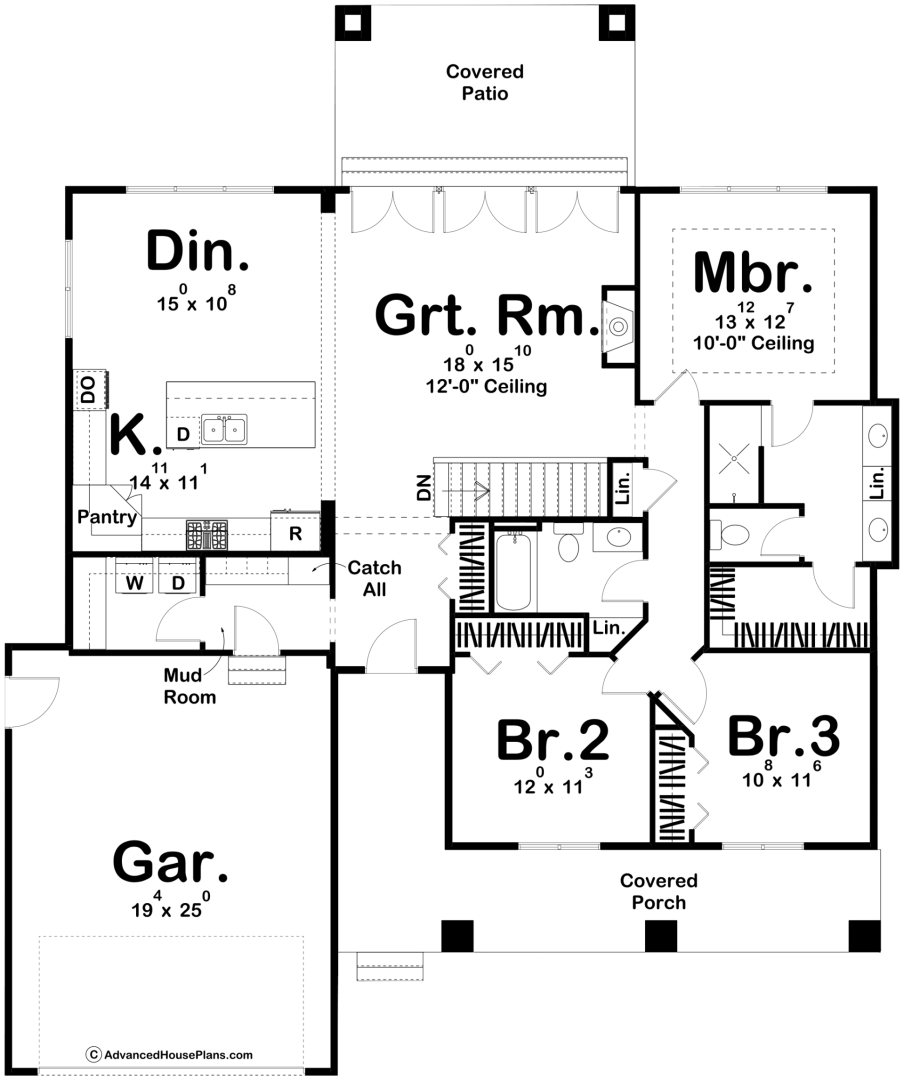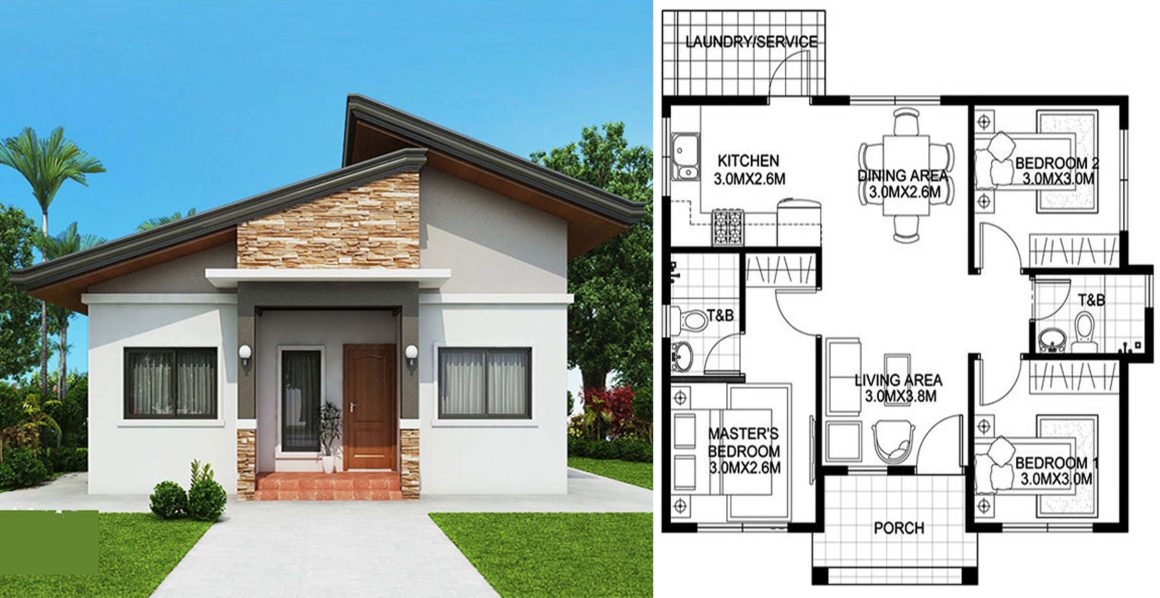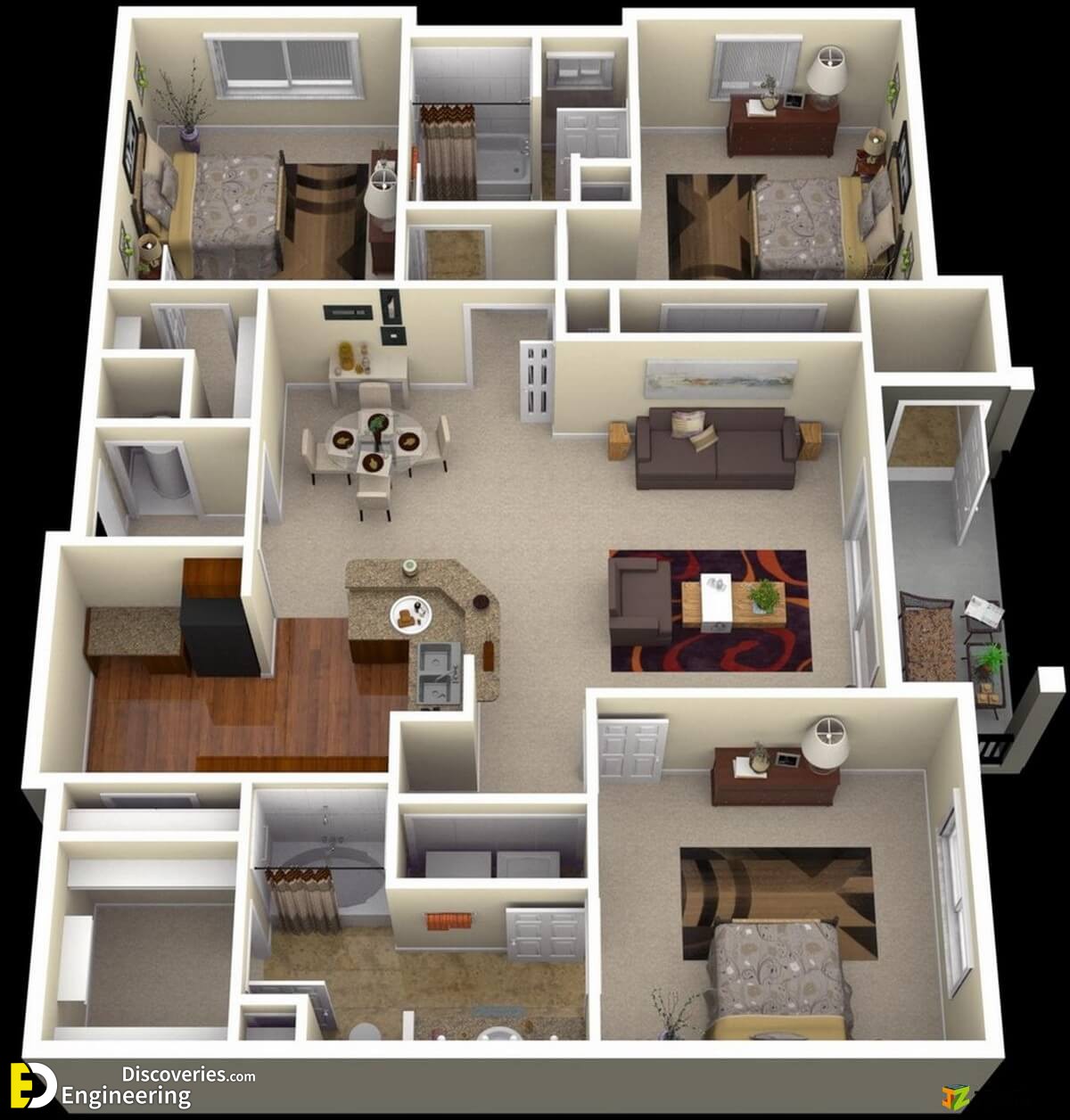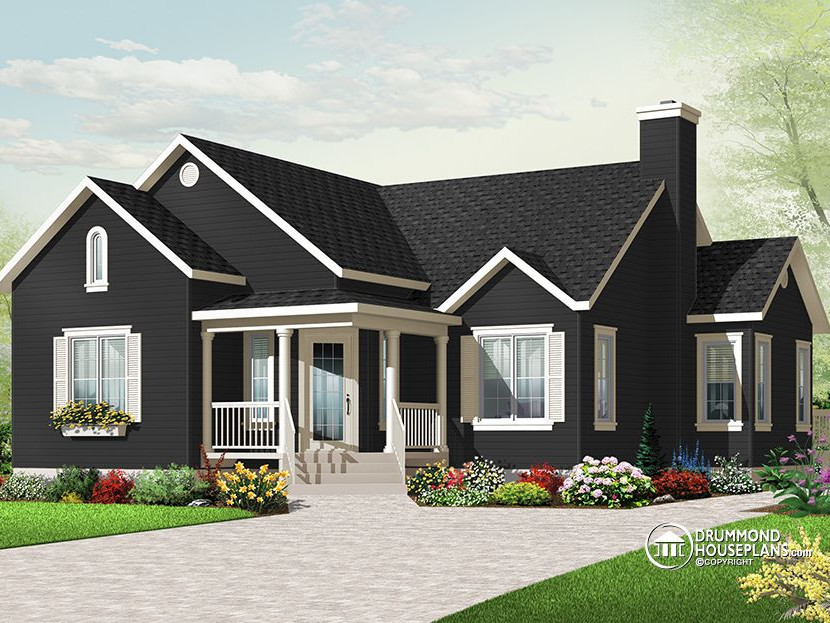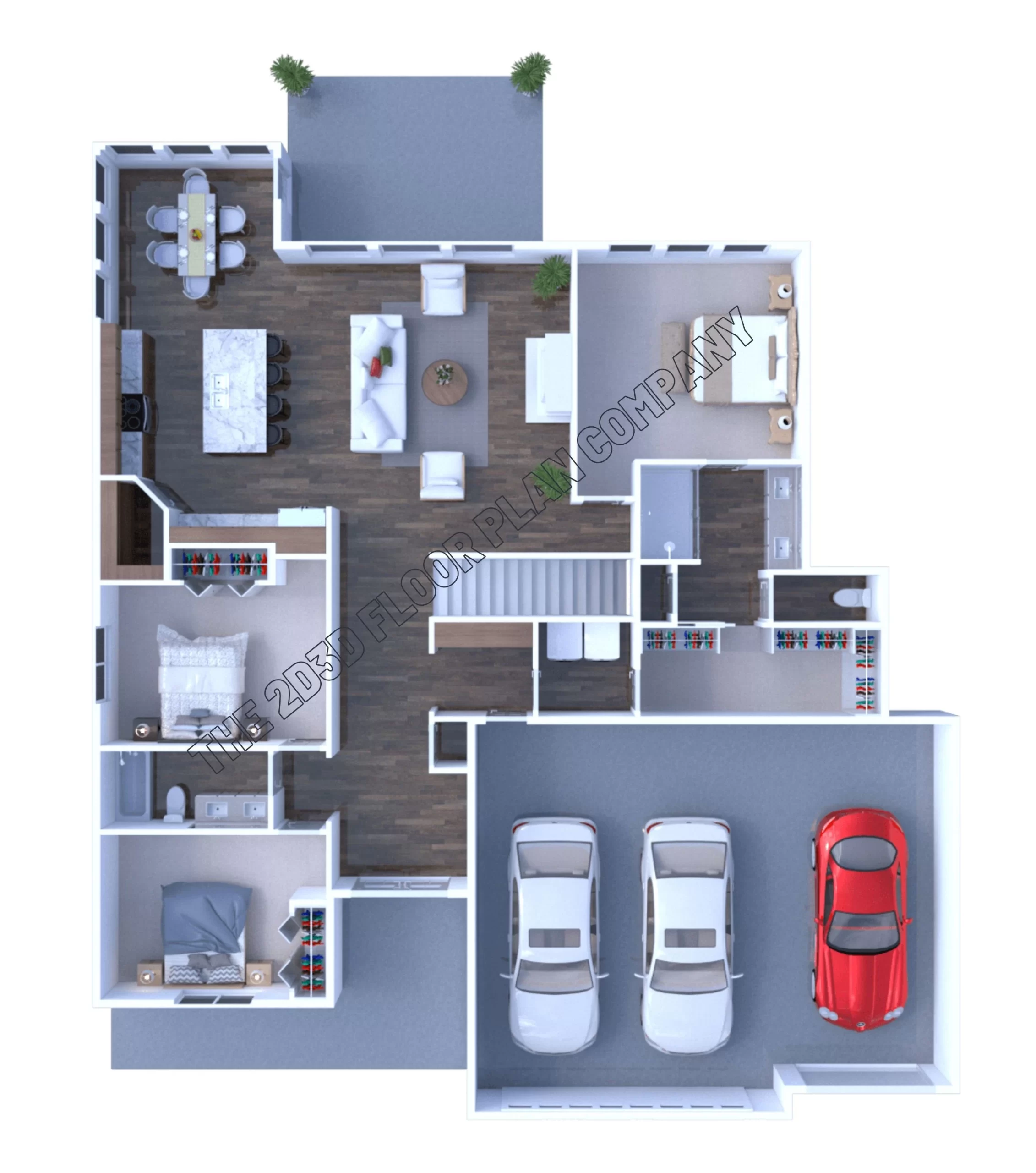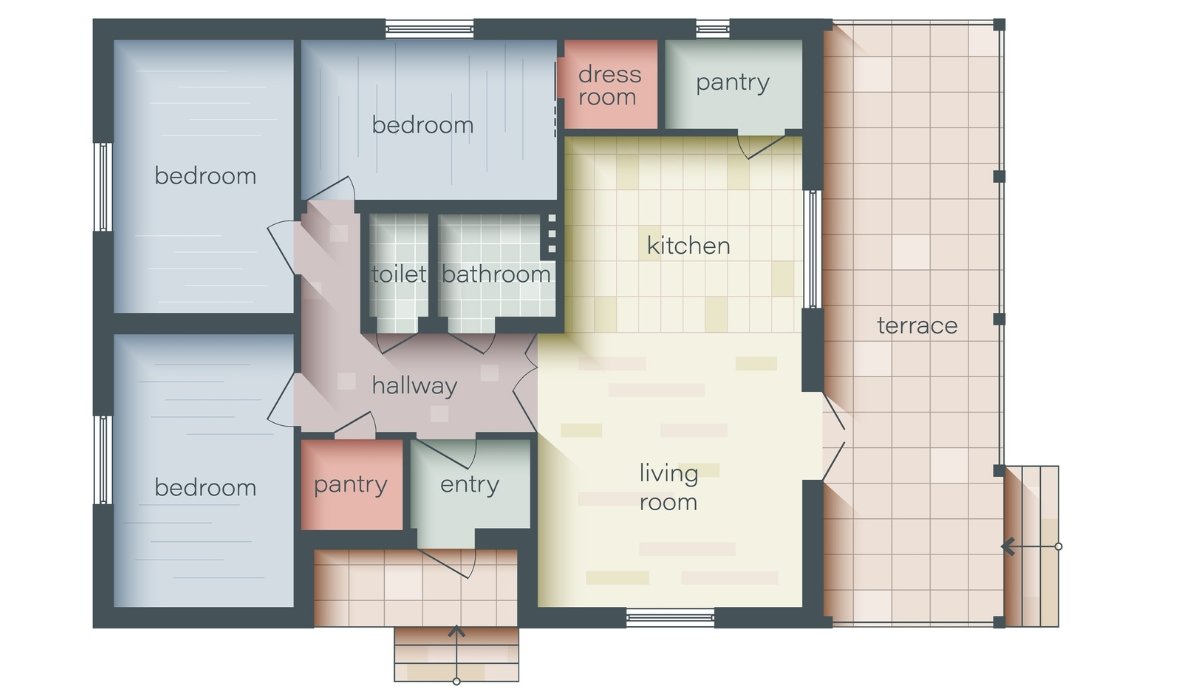Open Floor House Plans 3 Bedroom

The once-ubiquitous open floor plan, featuring three bedrooms, is facing a significant shift in buyer preference, impacting property values and new construction designs nationwide. Real estate professionals report a growing demand for homes with clearly defined spaces, signaling a departure from the open-concept layouts that have dominated the market for decades.
This evolving trend is reshaping the housing market, forcing developers and homeowners to reconsider interior designs.
The Open Floor Plan: A Fading Trend?
For years, the open floor plan has been a mainstay in new constructions and renovations. The design, which combines the kitchen, living room, and dining area into one large, interconnected space, was prized for its sense of spaciousness and sociability. However, recent data reveals a growing dissatisfaction with this layout, particularly in three-bedroom homes.
Rising Demand for Defined Spaces
Real estate agents across the country are witnessing a surge in requests for homes with separate living areas. Sarah Miller, a realtor with Acme Realty in Denver, CO, explains, "Buyers are increasingly vocal about wanting distinct rooms. They're citing noise concerns, lack of privacy, and the difficulty of maintaining a clean and organized look in a large, open space."
According to a recent survey conducted by HomeTrends Magazine, 68% of prospective homebuyers now prefer homes with at least some degree of separation between living areas. This marks a significant shift from just five years ago, when open floor plans were almost universally desired.
The survey also indicated that the shift is more pronounced in families with young children and those working from home.
The Three-Bedroom Home: A Focal Point
The three-bedroom configuration is particularly affected by this trend. John Davis, a building contractor with Davis Construction in Austin, TX, notes that three-bedroom homes are often targeted towards families or individuals needing extra space for home offices or hobbies.
“These buyers value functionality and privacy, which can be challenging to achieve in a completely open floor plan,” says Davis.
Data Points to a Change
Data from the National Association of Realtors (NAR) shows a slight but noticeable increase in the average square footage of new homes, even as lot sizes remain relatively stable. This suggests that builders are allocating more space to create separate rooms rather than maximizing open areas.
Specifically, homes built in 2023 are, on average, 50 square feet larger than those built in 2020.
Reasons Behind the Shift
Several factors contribute to this change in preference. The rise of remote work has highlighted the need for dedicated home offices, free from the distractions of an open living area. Moreover, the increased focus on mental well-being has led people to prioritize spaces that promote relaxation and privacy.
Increased awareness of noise pollution within the open area is a growing concern, leading homeowners to desire more insulated rooms.
Additionally, the minimalist aesthetic, which often complements open floor plans, is giving way to warmer, more personalized styles that lend themselves to defined spaces.
Impact on Home Values and New Construction
The shift away from open floor plans is impacting both resale values and new construction designs. Homes with clearly defined spaces are now commanding higher prices in certain markets. Miller explains, “We’re seeing that homes with separate living rooms and kitchens are attracting more offers and selling faster than comparable homes with open layouts.”
Developers are responding to this demand by incorporating more traditional layouts into their new construction plans. Davis adds, “We’re now offering buyers the option to customize their floor plans to include separate rooms, even in smaller homes. It’s become a major selling point.”
Some are even retrofitting existing open floor plans by adding partial walls or strategically placed furniture to create more defined zones.
Adapting to the Changing Market
Homeowners with existing open floor plans can adapt to this changing market by employing creative design solutions. Room dividers, bookshelves, and strategically placed furniture can help delineate spaces without requiring extensive renovations.
Area rugs and changes in flooring can also visually separate different zones within an open layout.
Conclusion: What's Next?
The trend away from open floor plans is likely to continue as buyers prioritize privacy, functionality, and a sense of calm in their homes. Real estate professionals and developers must stay attuned to these evolving preferences to ensure they are meeting the needs of the market. The demand for three-bedroom homes with defined spaces is expected to remain strong, requiring a reassessment of interior design strategies.
